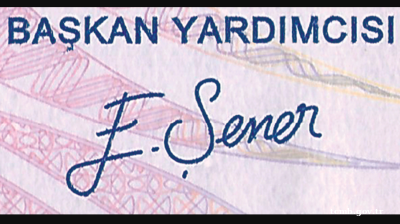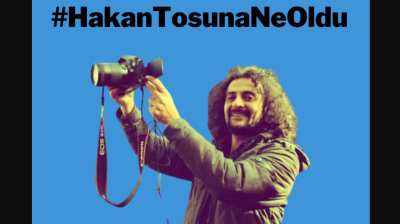Qizilqumsement (QZSM) is of Soviet vintage, set up in 1977, and is the biggest cement maker in Central Asia. If construction is one of the main drivers of economy growth, then the frenetic activity at the cement plant is perhaps the best indicator of the boom that is sweeping the country.
Located outside of the city limits of the industrial town of Navoi and surrounded by flat rocky desert entering the plant’s grounds is a step back in time for anyone that has spent time in the Former Soviet Union (FSU).
At the gate is a wall with the photos of the previous directors, all of them with sour po-faced poses that are the hallmark of Soviet-era official portraits. Another section has pictures of the best employees of the month with equally serious faces.
Driving into the plant there are three huge beaten silos of the original production standing at the back of the territory that continue to churn out 3.2mn tonnes per year (tpy) of cement entirely for the domestic market. Domestic demand is currently outstripping domestic supply by 6mn tonnes, forcing Uzbekistan to import cement, and the Qizilqumsement plant is working flat out to get cement out to its customers.
In the first eight months of this year Uzbek companies bought a total of 8mn tonnes of cement, up 18.2% year on year and driving the prices up by 2.4% as a construction boom gathered momentum in the same period. But thanks to the production deficit the country had to import 550,000 tonnes of cement from its neighbours in that period.
Qizilqumsement is hoping to do something about that. Earlier this year the company launched a $112mn investment to add a fourth production line – the first significant investment in the plant since 1989 – that is slated to come online in December. The new line will add 2.2mn tpy of cement to its output, bringing the total output to 5.8mn tpy – a bit less than a third of Uzbekistan’s entire cement production.
“The contractors are Russian, Turkish and Chinese, although most of the equipment is German,” says Abduqahhor Salomov, the general director of Qizilqumsement sitting in his modest office drinking tea. “We have mostly financed it from our own funds and the return on investment should take about seven years. There is huge domestic demand. We can’t even meet that. Even with the new capacity there won’t be enough of a surplus to do any exports. Maybe next year.”
The centre of the grounds where the new silo and processing plant is going up is a hive of activity. The ground is littered with metal components, material and equipment and the new silo tower soars overhead, cloaked in scaffolding and cranes and busy with men working on the structure. It is already more than three-quarters completed and looks oddly out of place with its slick coat of paint and obvious shinny newness compared to the surrounding buildings that have been battered by desert weather for decades.
The ebullient director proudly tells bne IntelliNews that the company is funding 81% of the investment from its retained earnings and the rest has been taken as commercial loans from Uzbek banks.
“In 1994 we had to close down one of the three lines, as there was no demand,” says Salomov. “Today we can’t produce enough and even after the new line goes into action we will be working at full capacity. You can feel the difference in the country.”
Qizilqumsement business has been freed and transformed. Once a key part of the command economy, its status was little changed during the administration of Islam Karimov, Uzbekistan’s first president, who maintained a more or less centrally controlled economy.
What has changed since Uzbek President Shavkat Mirziyoyev took over in 2016 is not any specific sweeping reform other than the plant is allow to run its own affairs and manage its own funds, despite the fact that it remains largely state-owned.
Nevertheless, Uzbekistan’s cement deficit is a strategic and balance of payments problem for the country and Qizilqumsement’s investment project to boost production is one of a dozen going on at smaller plants in the country. Uzbekistan’s total cement output is around 19mn tpy, but the demand is currently some 24mn tpy. The new projects are expected to close the gap next year and make the country self-sufficient in cement.
Reorganisation and privatisation
Freeing up companies to be in charge of their own business has been the most effective reform, but Qizilqumsement has also been through a more formal restructuring too that started in the Karimov era when it was transformed into a joint stock company. But now the company is working up towards its eventual privatisation.
“We were changed into a joint stock company already in 1996 that is 86% owned by the government,” says Salomov. “Now we are getting ready for privatisation. The plan is to sell the entire 86% stake. We are preparing, but no one is sure when it will happen.”
Asked if he thinks it is a good idea to privatise the company Salomov says simply: “Privatisation is a good idea, as the company will be more profitable than when it is owned by the state.” This is the director who has been working at the plant for 36 years speaking in a deadpan voice of someone stating the obvious.
Navoi is in the heartland of Uzbekistan’s industry, as many elements of the country's heavy industry are located in the desert city. But even Salomov says the changes in the country are obvious here too.
“Today there is a huge difference. We can feel the development in the different spheres of the country. Things are noticeably accelerating in the last two years,” says Salomov. “Everyone has their own ideas. Me? I’m in cement production, but I can feel the development from the production and sale of cement.”
The government has been giving the industry a helping hand as it tries to reach self-sufficiency. The taxes on cement production were cut last year from UZS40,000 ($3.72) per tonne to UZS25,000. At the same time, the profit tax on cement makers was cut from 20% to 15%.
“I hope the taxes fall again,” says Salomov. “The government cut the taxes so Uzbek cement is more competitive against the imported cement. If our cement costs too much then construction companies will just buy cement made elsewhere, but now ours is cheaper and that lays the basis for our investment into new production, as we know we will have buyers for it.”
One possible cause for concern is the company borrowed part of its investment funds as commercial debt from the local banks and chose to borrow the money in dollars, which were converted to soum for the project.
“We borrowed in currency as it was cheaper. But the foreign exchange risk is not really a problem: the devaluation of the soum to the dollar this year has so far only been 1%,” says Salomov. “Besides, we have a natural hedge, because in addition to cement we produce lime which we export to Kazakhstan which is paid in dollars, so we have dollars too which we can use to pay off the debt if we have to.”
Stock pickers darling
Majority-owned by the government, another 14% of the company is listed on the Tashkent Stock Exchange (TSE) and owned by portfolio investors as well as a share that has been given to the workers. Asked who the minority shareholders are, Salomov says he doesn't know.
Qizilqumsement has already emerged as one of the most popular stocks on the Tashkent Stock Exchange (TSE) and most of the shares in the free float are owned by the nascent funds. The business is basic and the company is a cash cow, say analysts.
It mines limestone in a massive deposit in the Qizilqum (aka Kyzyl-Kum) desert less than a kilometre away from the production facilities that turn the stone into cement that is shipped all over the country.
In October the company reported its nine month results under Uzbek accounting standards that saw revenues fall by 11.5% y/y despite the construction boom in Uzbekistan, but a 4.4% decline in the cost of goods.
At the moment the company is ploughing much of the cash it is earning into the construction of the fourth line. Construction work increased by 4.5% in the period, the Bluestone investment bank reported, although the pace of increase in the construction had slowed somewhat.
Net income also fell by 46% in the period due to the fall in revenues, increased operating expenses, shrinking interest income as funds were spent on construction and some FX loses. However, the total assets rose in value by 19.6% thanks to the significant increase in capex on the fourth line.
The company’s finances highlight that even in a boom management still has a lot of work to do, as the company also reported an 11.9% rise in receivables that “contributed to QZSM’s cash crunch and [indicate] that the country’s rapid economic recovery is not evenly distributed among the construction companies,” says Bluestone. Demand is high and sales are strong but companies still need to collect the payments on time, and that is not always easy.
The one bone of contention is the company’s failure to pay dividends, due to the cash crunch. After using its cash to retire some of its long-term debt obligations in 2019 the company took out a fresh UZS240bn of long-term debt, denominated in dollars, this year, ostensibly to pay out dividends of UZS660 per share but to the chagrin of shareholders it failed to pay. The company has borrowed a total of $112mn but its overall level of debt to equity ratio remains an extremely modest 0.10, according to Bluestone.
“Despite Qizilqumsement's large-scale investment in a fourth production line, on May 22 the company announced it would allocate 75% of 2020 net profits to dividends at UZS989 per share. However, the company failed to pay the dividends within the 60 days stipulated by the regulations due to cash needs for construction,” Bluestone reports.
The management called an EGM at the end of August and voted to reduce the dividend payments to UZS660 per share to free up more cash to pay for its capital investment, but it wasn't enough. In September the management announced that it was suspending the dividend payment altogether.
Despite these growing pains portfolio investors remain keen on the company. The Tashkent-based, but foreign managed, AFC Capital says that Qizilqumsement accounts for a third of its portfolio on its own and Bluestone also has a Buy recommendation on the stock, estimating the shares still have a 14% upside. When the fourth production line comes online the capex should drop to nothing and the revenues will increase; the company's financials could improve dramatically in the New Year.
“Our price target is a conservative forecast that could be revised significantly upwards if the fourth cement production line opens in December 2021, as the company indicated in 2020, and the company resolves its dividend and cash flow issues,” Bluestone said in a note.
Features

BEYOND THE BOSPORUS: Investigators feel collar of former Turkish central bank deputy governor
Regime gangs continue to hustle for gains. Some Erdoganist businessmen among the losers.

Journalist beaten to death in Istanbul as security conditions in Turkey rapidly deteriorate
Publisher, meanwhile, is shot in leg. Reporters regularly experience violence, judicial harassment and media lynching.

Agentic AI becomes South Korea’s next big tech battleground
As countries race to define their roles in the AI era, South Korea's tech giants are now embracing “agentic AI”, a next-generation form of AI that acts autonomously to complete goals, not just respond to commands.

Iran's capital Tehran showcases new "Virgin Mary" Metro station
Tehran's new Maryam metro station honours Virgin Mary with architecture blending Armenian and Iranian design elements in new push by Islamic Republic






